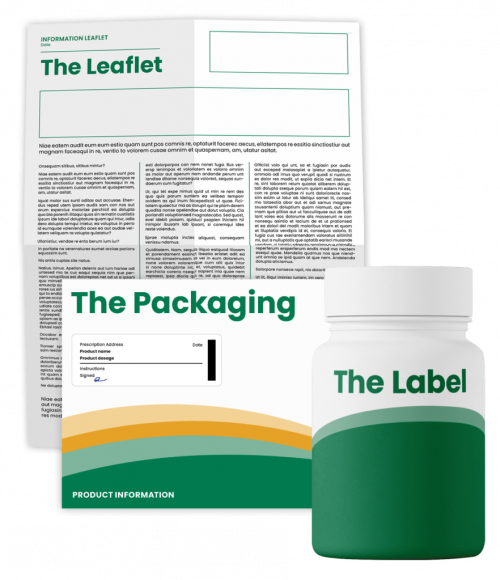
Why is reading and following the information provided with your pet’s medicine important?
Keeps your pet safe
- Veterinary medicines can harm your pet and/or fail to work if they are not given correctly.
- Reading and following the information provided with your pet’s medicine can help prevent errors, such as overdosing your pet or treating the wrong animal if you have more than one pet at home.
- For example, applying certain dog flea treatments on a cat can be fatal.
Keeps you safe
- The label and information that comes with your pet’s medicine includes instructions on how to give or apply it safely and correctly.
- For example, instructions may include the need to wear gloves and wash hands after administration.
Keeps our environment safe
- All veterinary medicines must undergo an Environmental Risk Assessment based on their expected use before they can be prescribed or sold.
- Reading and following the information provided with your veterinary medicine helps mitigate any potential negative environmental consequences.
- For example, some veterinary parasiticides may contain specific warnings, such as not to wash your pet or its bedding or not to allow them to swim in watercourses for a specific timeframe after treatment. This warning is provided to prevent harm to specific aquatic species and environments.
- Find out more about the environmental risk assessment for veterinary medicines and parasiticide treatments:
Forms part of the regulatory controls
- There are a broad range of stringent regulatory controls in place for governing veterinary medicinal products. These comprehensive controls ensure that safe, effective, and quality medicines are available for our animals, whilst safeguarding people and the environment.
- In the UK, the national competent authority and independent regulator is the Veterinary Medicines Directorate (VMD).
- All veterinary medicines marketed in the UK for animal use have undergone an independent scientific assessment with the VMD, before they can be placed on the market and used. This independent assessment considers the product’s quality, efficacy and safety, including safety in the environment.
- Part of the regulatory process includes approval of the information provided with your pet’s medicine (the leaflet and all packaging). This helps ensure you can use the product correctly and safely, whilst maximising its therapeutic benefit.
- To find out more about the regulatory process for veterinary medicines, please click here.
Make sure the medicine works
- Reading and following the information provided with your pet’s medicine helps ensure the product works as intended, so it can help keep your pet healthy.
- For example, if your vet prescribes an antibiotic, they will specify how long the course should be. This course must be completed and not stopped early, even if your pet appears to have recovered. Unfinished courses can result in the infection re-emerging, and a further course of antibiotics may then be required. This could contribute to the bacteria developing resistance to antibiotics, meaning the treatment will no longer be effective.
Supports continued safety and efficacy
- Even after the initial approval process, all veterinary medicines continue to be monitored by the UK regulatory authority (the Veterinary Medicines Directorate, VMD), through a process called “Pharmacovigilance”.
- Veterinary pharmacovigilance broadly describes the science and activities relating to the monitoring and evaluation of adverse events and efficacy; helping improve the safety of veterinary medicines.
- Thankfully, unexpected adverse events related to veterinary medicines are rare. If you are concerned there may have been a problem, tell your vet or the retail outlet where you bought your veterinary medicine. They will report this to the VMD and the company that supplied the product.
- Alternatively, you can report a suspected adverse event yourself, direct to the VMD, via this link.
- Animals, people, and the environment benefit from pharmacovigilance activities, which aim to ensure the continued safe use of effective medicines through looking at this bigger picture.
- If necessary, the directions for use will be changed by the authorities to ensure vets and pet owners have all the information needed to prescribe and use products correctly, safely, and effectively.
- To find out more about veterinary pharmacovigilance, please click here.
Where can I find the information I need?
Depending on the veterinary medicine, information will be on the immediate product label, on the packaging or on the package and the leaflet that comes with the product. Your vet may also give you specific advice and instructions specifically tailored to your pet and its condition.
The product literature contains specifically authorised information to help you administer your veterinary medicine correctly, safely and effectively; to protect you, your pet and the environment. Always follow your vet’s advice.


Examples of what to look for
Target species
- It is important to ensure you are giving the correct medicine for the correct species. Take particular care if you have more than one pet in the family.
- If your vet prescribes a medicine for one animal, don’t administer it to or use it to treat another.
- If you are buying a medicine, make sure it is correct for your pet’s species and size/weight; if you are unsure check with your vet or a qualified person in a pet shop before purchasing.
For example, some flea treatments for dogs can be fatal to cats.
Dosage and advice on correct administration
Every veterinary medicine has instructions on the correct amount to give (dose) and how frequently to give it, and also any specific advice on how to apply or administer the medicine. Following these instructions means the medicine has the best chance of working to help your pet, and minimises any negative consequences to you, your pet, or the environment.
For example, instructions for ‘spot on’ treatments for your pets may require you to part the pet’s fur fully, to ensure the product reaches the skin and to avoid contact with the application area until dry.
Other product instructions may advise giving the medicine with food, or maybe before food, as different formulations work differently.
Adverse reactions
Like us, sometimes your pet may experience a reaction to a medicine. The product literature contains details of what has occurred in other animals and how likely it is to happen. If your medicine has been prescribed by a vet, they will explain what to look out for. Very occasionally, an unexpected reaction may occur. If you have any concerns, or if you feel the product is not working, always talk to your vet.
You can report a suspected adverse event yourself, direct to the VMD, via this link.
Special warnings, storage and disposal instructions
- Some veterinary medicines have specific instructions on where/how they need to be stored. For example, some need to be stored at room temperature or in the refrigerator to ensure they stay effective. Always keep veterinary medicines out of the reach of children and your pets.
- Others might have specific instructions on administration, for example, the need to wear gloves.
- Some veterinary medicines like parasiticides may contain specific warnings, such as not to wash your pet or its bedding or not to allow them to swim in watercourses for a specific timeframe after treatment. This warning is provided to prevent harm to specific aquatic species and environments.
- Follow any specific advice about disposal of the product.
Expiry date
This is useful to check the medicine is in date, as medicines may start to lose their efficacy after the expiry date or a certain time after opening. It is advisable not to save or stockpile veterinary medicines for later use.
For further reference:
